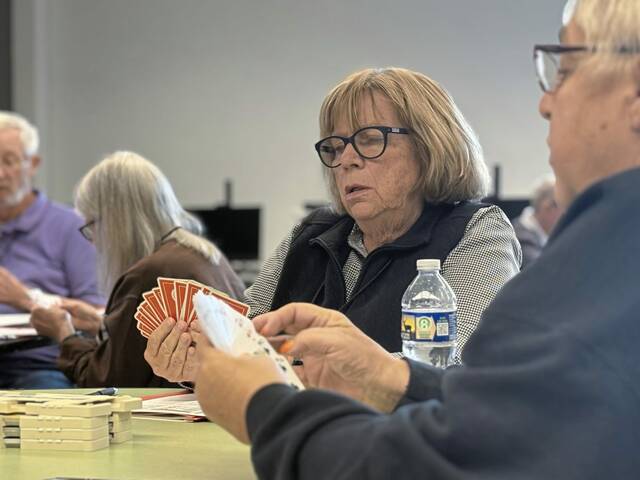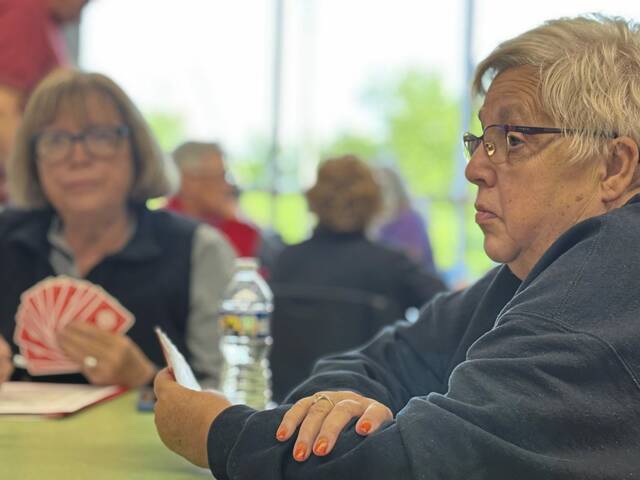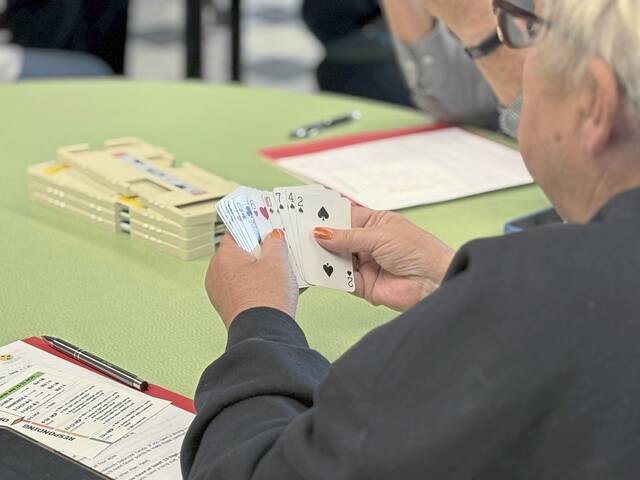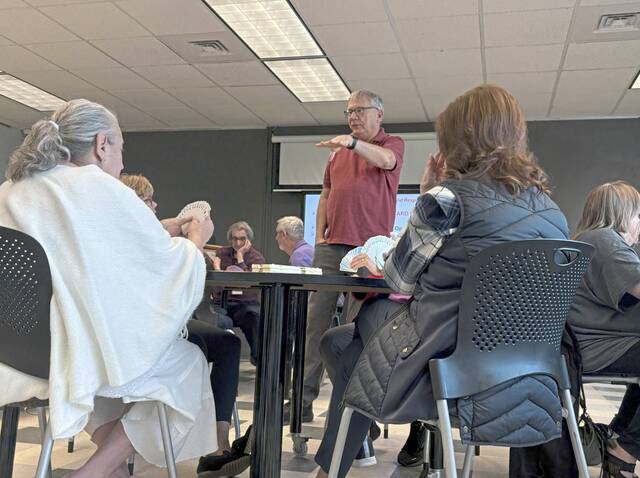Once Chris Rasmussen of Monroeville learned as a young man how to play bridge, he was hooked.
He began consuming books on the card game, spending every Friday and Saturday playing with friends.
Today, Rasmussen, 67, teaches a class in bridge at the Monroeville Public Library. On Mondays for six weeks, about 15 people gathered to learn through lectures and practice runs of the game.
‘I’m a teacher by trade’
The lingo of bridge is complicated and can seem like a foreign language, with varied terms used throughout the bidding process. Some in the class were challenged to fully grasp the rules even in the fourth class session, when a “no trump” bid was explained. Rasmussen remained patient, attempting to explain everything as best he could by tapping into his own experiences with the game.
Class member Debbie Stiles said the content on the first few weeks was on the easier side, but as time went on the lessons got more challenging.
“Be patient and push through the confusing parts,” Stiles said. “Eventually, it will click.”
Judy Hall, who was volunteering to help the class, plays bridge every Tuesday with Rasmussen at the Monroeville Senior Center. She said that some people at the center get nervous around Rasmussen because he’s a good player, but in the classroom, no one is afraid to ask questions because he has created a positive environment.
“It was obvious that he cares about the game and cares (that) others learn about the game,” Hall said. “Chris … does a very good job.”
Rasmussen became an instructor through the Pittsburgh Bridge Association.
Bill Holt, chair of the association’s education department, was looking for someone to teach the game east of Pittsburgh with a grasp on the game and a good sense of humor to keep the classes interesting. After meeting Rasmussen, Holt said he knew Rasmussen was a good fit for the gig.
Rasmussen previously taught a bridge class while completing his undergraduate degree at the University of Pittsburgh. He also had experience teaching mythology at his high school and various courses at several Pittsburgh-area colleges.
“I’m a teacher by trade,” he said.
Years of experience
Throughout his time teaching bridge at Pitt, Rasmussen also hosted games in the Pitt law school common area.
He took a hiatus from the game after he got married and had a family, save for the times he traveled to Sea Isle City, N.J., for family vacations. Rasmussen, two of his brothers and his father would spend the evenings of their trip playing 24 hands of bridge.
“Bridge is a vehicle to bring families together,” said Rasmussen’s brother, Roald Rasmussen.
The family would spend hours around the table and this is when Roald Rasmussen said he truly got to know his brother.
“That person is tremendous,” Roald Rasmussen said.
It was not until a few years ago that Chris Rasmussen started regularly playing bridge at the senior center. Eventually, he was invited to partner with someone and play a sanctioned duplicate bridge game. The partners won their first game.
Once he got the call asking him to teach a class, Rasmussen was hooked again.
“We want this game to continue because it’s so good for your brain, it’s good for socialization,” he said.
Although he has been playing for many years, Rasmussen does not consider himself an expert and said beginners should take a class.
“The deeper you get, the more challenging it gets,” he said.





















